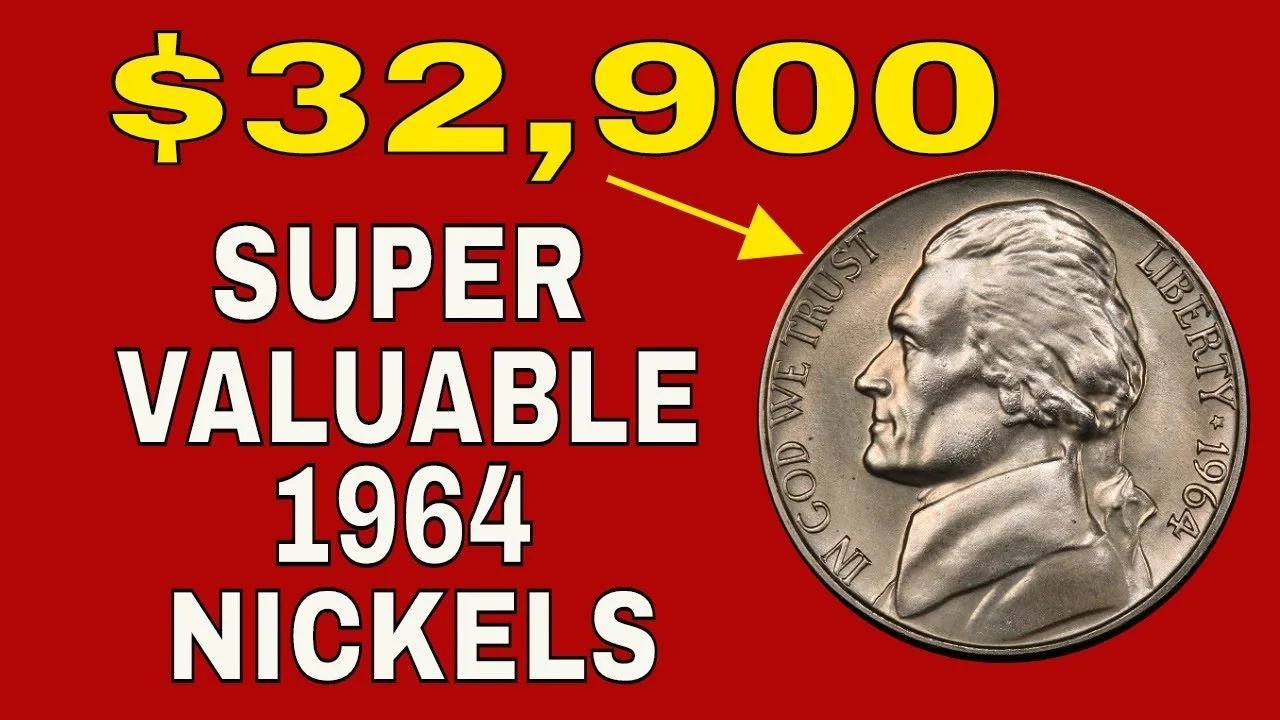1964 Steel Penny Discovered in Tackle Box Shocks with $875,000 Value, For most of us, a penny is just a small piece of change—tossed in a jar, forgotten in couch cushions, or spent without a second thought. But every once in a while, a single coin changes everything. One such story involves a 1964 Steel Penny—an extremely rare and valuable coin that turned a simple day into a life-altering event.
It all began with a fishing trip. A retired man sorting through his late father’s old fishing gear stumbled upon a dusty tackle box in the garage. Inside, amid rusted hooks and faded bobbers, he discovered a few loose coins. One penny, in particular, caught his eye—not for its age, but for its color. Unlike the usual copper-toned penny, this one gleamed with a silver-gray sheen.
That seemingly ordinary discovery turned out to be a 1964 Steel Penny, and after professional appraisal, its estimated value reached a staggering $875,000. In the world of rare coins, the 1964 Steel Penny is a unicorn—a mysterious minting mistake that collectors dream of finding.1
Why the 1964 Steel Penny Is So Valuable
To understand why this single coin is worth more than many luxury cars or even homes, we need to look into history and the unique conditions that led to its creation.
World War II and the Steel Cent Era
During World War II, copper was in high demand for producing ammunition and military equipment. As a result, the U.S. Mint shifted from copper to steel when minting pennies in 1943. These steel pennies were coated with zinc to prevent rusting, giving them a bright silver appearance.
However, the steel cent was short-lived. Public complaints about confusion with dimes and rapid rusting led the Mint to revert back to copper in 1944. Since then, pennies have remained mostly copper-based. The 1943 steel penny remains common among collectors, but a 1964 steel penny? That wasn’t supposed to happen.
The Accidental Rarity of the 1964 Steel Penny
The 1964 Steel Penny is believed to be the result of a minting error. It’s thought that leftover steel blanks from earlier years, possibly from 1943 or similar tests, were accidentally used in 1964 when the Mint was producing standard copper pennies. Because of this, fewer than 10 of these coins are known or believed to exist today.
Their scarcity, combined with the accidental nature of their creation, skyrockets their value. A verified 1964 Steel Penny in decent condition could easily fetch up to $875,000 at auction, as evidenced by the man who unknowingly stored one in a tackle box for decades.
How to Identify a 1964 Steel Penny
Do you have a hidden treasure sitting in your change jar or an old family coin collection? Here’s how you can tell if you might have a genuine 1964 Steel Penny on your hands:
1. Color Check
Copper pennies have a reddish-brown hue. A steel penny will appear silver-gray due to the zinc coating. If your 1964 penny doesn’t have a copper color, you may have found something rare.
2. Magnet Test
One of the quickest ways to identify steel pennies is by using a magnet. Copper is not magnetic, but steel is. If your 1964 penny sticks to a magnet, it’s worth a closer look.
3. Date Verification
Many people mistake the 1943 steel penny for the 1964 steel penny. The former is common; the latter is exceedingly rare. Always double-check the year stamped on the coin.
4. Weight Measurement
Steel pennies are lighter than copper ones. While this difference is small, a precision scale can help verify it. If your coin feels unusually light, it might be worth weighing professionally.
5. Expert Evaluation
If you suspect you have a 1964 steel penny, don’t clean it. Cleaning rare coins can reduce their value. Instead, consult a reputable coin dealer or submit it to grading services like PCGS (Professional Coin Grading Service) or NGC (Numismatic Guaranty Corporation) for authentication.
What Makes a Coin Like the 1964 Steel Penny So Valuable?
Several factors determine the value of rare coins, especially one like the 1964 Steel Penny:
Minting Mistake
Coins that were never meant to be created often become prized collectibles. The 1964 steel penny is believed to be a mint error, making it incredibly desirable to collectors.
Extreme Rarity
With possibly fewer than 10 examples known to exist, this coin is rarer than most artifacts. Scarcity drives value, and the 1964 steel penny has it in spades.
Good Condition
The penny found in the tackle box was well-preserved due to its protected storage. Coins in mint or near-mint condition are always more valuable than worn ones.
Collector Demand
Coin collectors are passionate about their finds. The competitive nature of auctions and private sales can drive the price of a rare coin like this well into six figures.
Quick Facts Table: The 1964 Steel Penny at a Glance
| Feature | Details |
|---|---|
| Year | 1964 |
| Material | Steel (instead of copper) |
| Color | Silver-gray |
| Cause | Likely a minting error |
| Estimated Value | Up to $875,000 |
| Known Specimens | Fewer than 10 (estimated) |
| Discovery Example | Found in an old fishing tackle box |
| Often Mistaken For | 1943 steel penny |
What To Do If You Discover a Rare Coin
If you believe you’ve stumbled across a rare coin like the 1964 Steel Penny, here are the immediate steps to protect its value:
1. Store It Safely
Use a protective coin case or acid-free envelope. Keep it in a dry, cool place away from moisture or friction.
2. Avoid Cleaning
Never polish or scrub the coin. Even gentle cleaning can reduce the coin’s surface quality and lower its auction price.
3. Authenticate It
Submit the coin to PCGS or NGC for grading and certification. Authentication ensures legitimacy and increases value.
4. Consider Selling Smartly
Once authenticated, explore selling it through:
- Certified coin dealers
- Reputable auction houses
- Collector networks
- Online marketplaces with authentication services
FAQs About the 1964 Steel Penny
Also Read : $760 Cost-of-Living Payment May 2025: Government Support for Expenses Is Coming
1. How many 1964 steel pennies are out there?
No official count exists, but experts estimate fewer than 10. Most have never been seen by the public and could be hiding in private collections or family heirlooms.
2. Can I legally sell a 1964 steel penny?
Absolutely. As long as the coin is not counterfeit or stolen, it can be legally sold to collectors or through certified dealers and auctions.
3. Is the 1943 steel penny valuable too?
1943 steel pennies are collectible but not nearly as rare. Most are worth a few dollars unless they’re in mint condition or have minting errors.
4. Will cleaning a coin improve its value?
No. In fact, cleaning can drastically lower a coin’s value. Collectors prefer untouched coins with original surfaces, even if slightly tarnished.
5. Where should I sell a rare coin like this?
Choose a reputable coin auction or certified coin dealer. For the best value, always ensure the coin is graded and authenticated before sale.
Final Thoughts: Keep an Eye on Your Change
The story of the 1964 Steel Penny serves as a powerful reminder: treasure can be hidden in the most ordinary places. From the bottom of an old tackle box to a collector’s showcase, this unassuming penny became a life-changing discovery.
If you’re someone who enjoys hunting for hidden gems or simply has jars of old coins tucked away in the attic, it’s worth taking a second look. With the right knowledge and a little bit of luck, you too could find a piece of history worth hundreds of thousands of dollars.
So next time you spot a shiny penny that doesn’t look quite right, take a moment to check its date. Who knows — you might be holding the next $875,000 1964 Steel Penny in your hand.
Some Important Link
| Telegram Group | Click Here |
| WhatsApp Group | Click Here |
| Home Page | Click Here |










